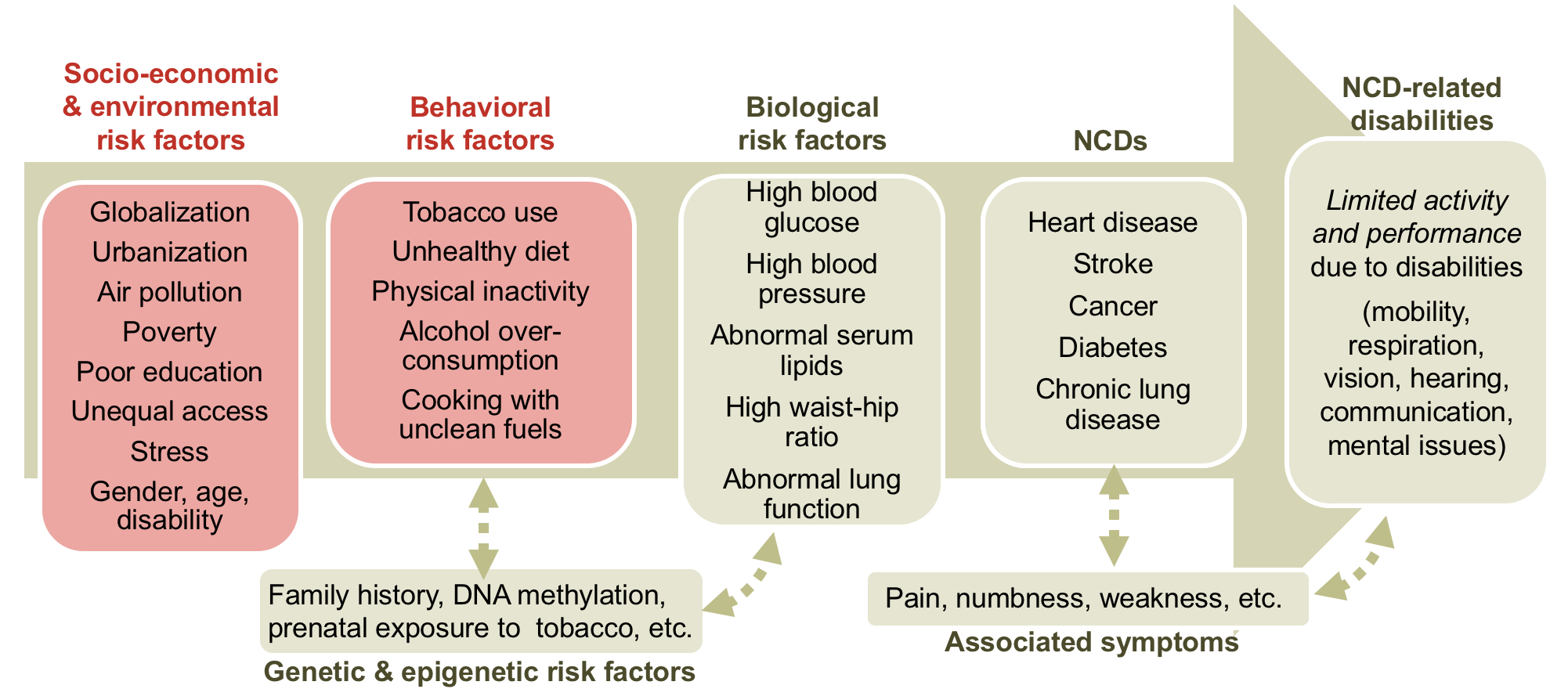Resources Topic 5: planning and implementing a prevention programme
Resources Topic 5: planning and implementing a prevention programme
In this Topic, we would like you to think about how to use the resources and discussions from the previous 4 Topics to plan your own intervention. You should choose an area of local, regional or national relevance.
Many of the resources which have been presented in the module's first 4 Topics are relevant, and you may want to review them.
You might think about where in the chain of causation you would like to intervene, and here is the picture we have seen before to remind you of the possible areas:

We have made a few suggestions for you to consider, based on the WHO Package of essential noncommunicable (PEN) disease interventions for primary health care in low-resource settings. This is quite a lengthy document, so we have picked out a few sections for you to review here.
From the Executive Summary:
"Effective approaches to reduce the NCD burden in LMIC include a mixture of population-wide and individual interventions. Such cost-effective interventions are already available and include methods for early detection of NCDs and their diagnoses using inexpensive technologies, non pharmacological and pharmacological approaches for modification of NCD risk factors and affordable medications for prevention and treatment of heart attacks and strokes, diabetes, cancer and asthma. These low technology interventions, if effectively delivered, can reap future savings in terms of reduced medical costs, improved quality of life and productivity. However, due to weak health systems, there are substantive gaps in their implementation particularly in LMIC. Efficient use of limited health care resources, sustainable health financing mechanisms, access to basic diagnostics and essential medicines and organized medical information and referral systems are imperative for provision of equitable care for people with and at risk of NCDs. They require long-term care that is proactive, patient centered, community based and sustainable. Such care can be delivered equitably only through health systems based on primary health care (PHC)."
Here are two pictures taken from the report that summarise the main action points.
While this report suggests a focus on primary care, you can interpret this in relation to any part of the health system in which you find yourself.
Health systems
When developing your plan, let's not forget the importance of costs and of the appropriateness of the type of health services and system available. Referring to the paper Looking at non-communicable diseases in Uganda through a local lens: an analysis using locally derived data, we note: "..there have not been any published studies of NCD-related costs in Uganda. An upcoming comprehensive review of global NCD cost publications from LMIC confirms that primary prevention of CVD, stroke, and diabetes is far less expensive and has lower unit costs than treatment interventions for those conditions. Further, outpatient treatment is far less costly than inpatient treatment, so it is critical to have an effective referral system that directs patients to the proper facility."